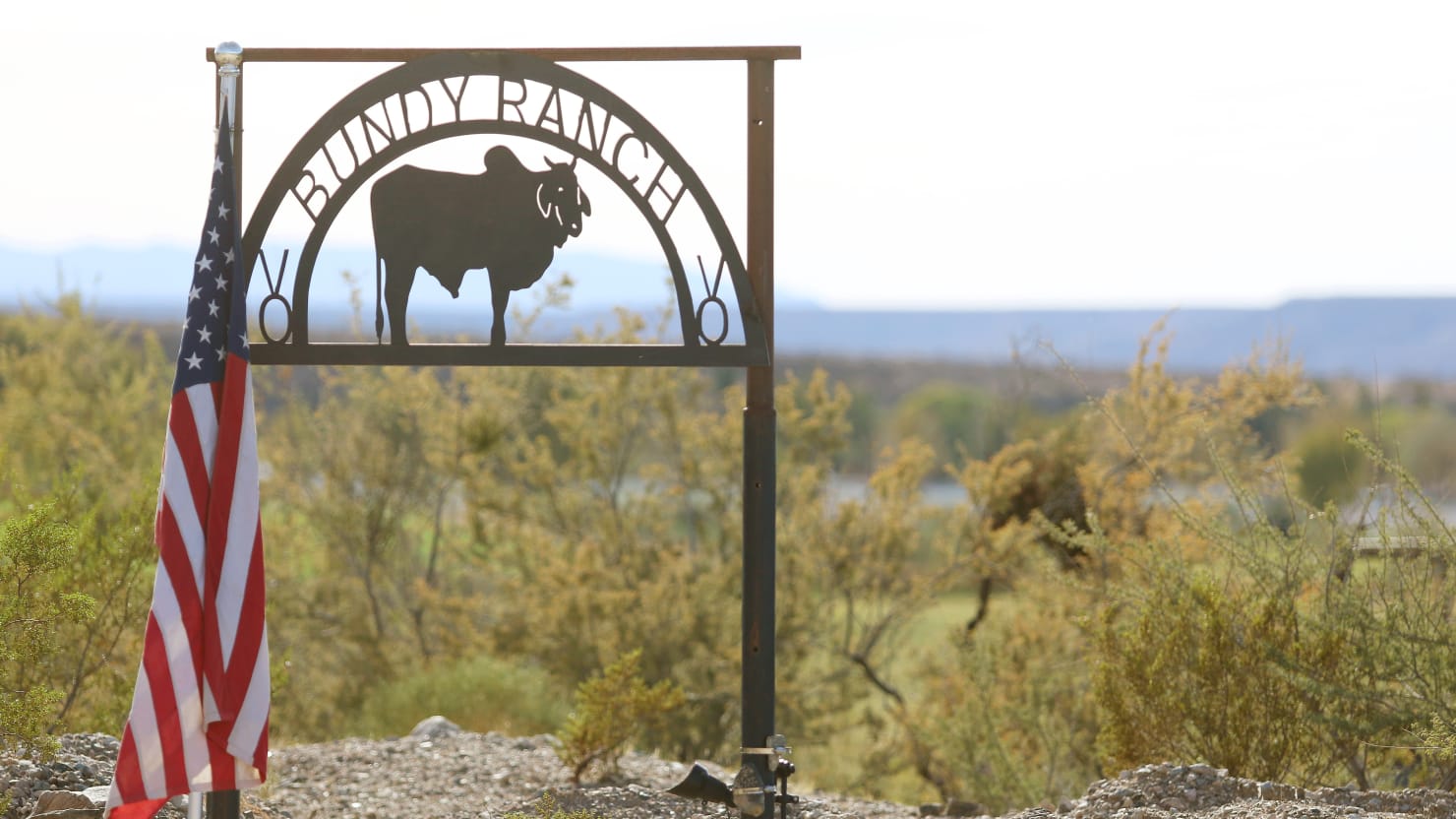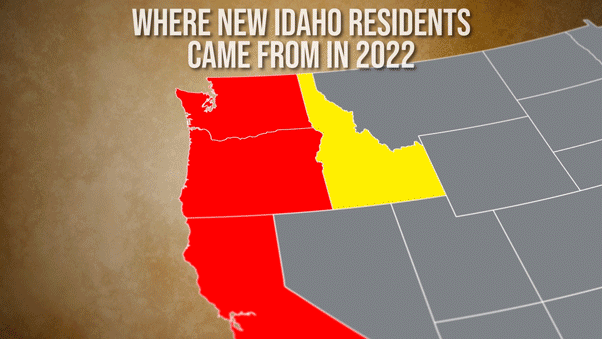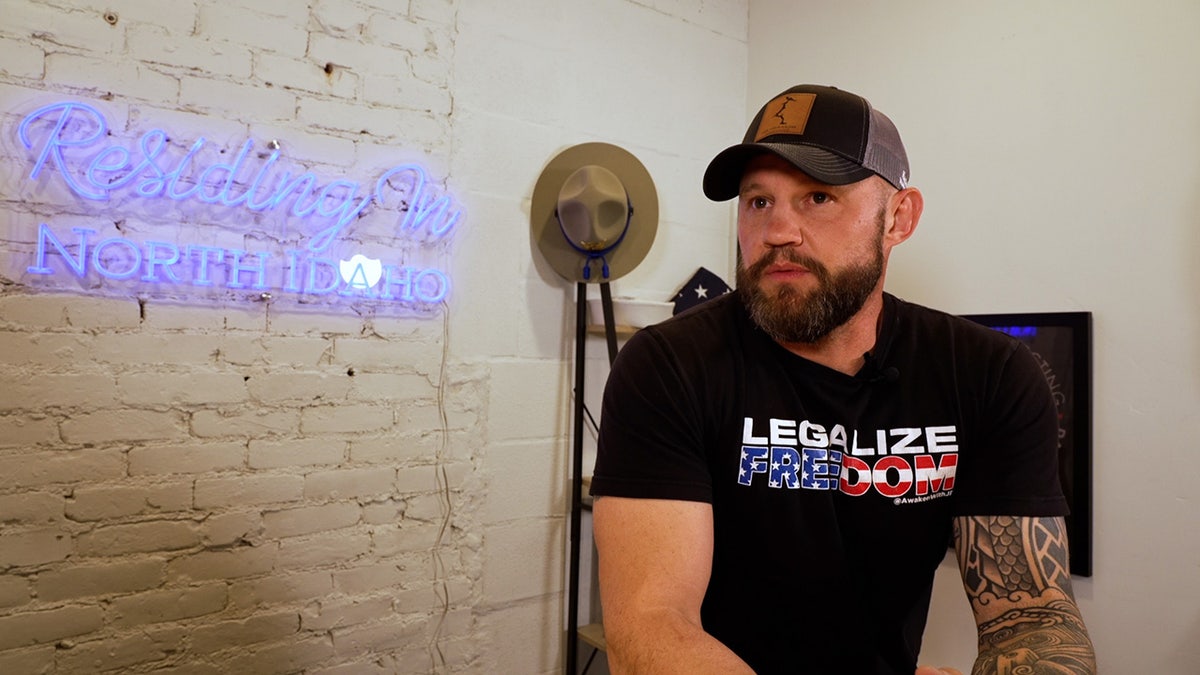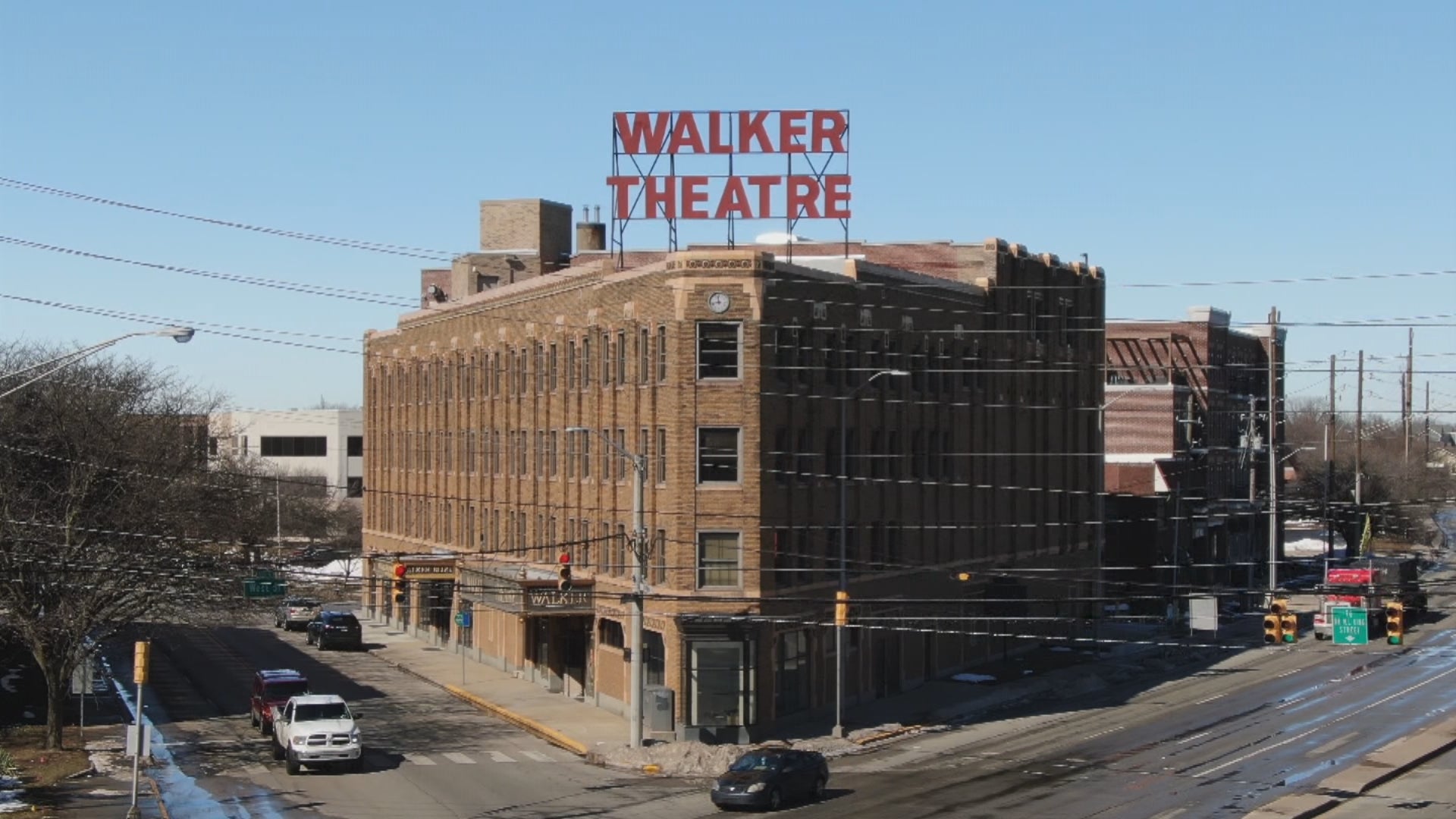Idaho
‘Bundy Ranch Sniper’ Pushed Move to Gut Idaho Terrorism Law

An Idaho militia leader who gained a level of infamy when a photo showed him aiming a gun at the feds during the standoff at the Bundy ranch in 2014 is now boasting that he is a driving force behind a bill that would gut the state’s anti-terrorism law. InvestigateWest reports that the legislation would narrow the Terrorist Control Act to apply only to those associated with foreign organizations. And Eric Parker, head of the Real Three Percenters of Idaho, told the site he’s been working behind the scenes to make it a reality for three years. That concerned Amy Herzfeld-Copple, director of the Western States Center, a civil rights non-profit. “Federal authorities have considered Eric Parker to be an anti-government and paramilitary extremist who belongs in prison,” she told InvestigateWest. “Why would the Idaho Legislature be listening to and taking policy cues from someone who pointed a rifle at law enforcement?”
Read it at InvestigateWest

Idaho
Idaho’s 2023 average hourly wage increased 8.3% from 2022

Idaho’s average wage for all occupations was $26.75 per hour in 2023, according to recently released data from the Bureau of Labor Statistics’ Occupational Employment and Wage Statistics survey. This amounts to an increase of 8.3%, or $2.06 per hour, from the year prior.
The median wage, representing the midpoint between lowest and highest earners, also rose from $19.26 per hour in 2022 to $21.27 per hour in 2023 — a 10.4% increase over the year.
All of Idaho’s Metropolitan Statistical Areas (MSAs) had an increase in median wage of over $1.00 from 2022 to 2023. However, average wages and staffing patterns vary across the state. The Boise MSA had the largest average hourly wage increase of $2.62 over the year.
Among the state’s labor market regions, southwestern Idaho had the highest average hourly wage for 2023 at $27.87. It also had the highest median wage for 2023 at $21.69 per hour — barely edging out north central Idaho’s median wage of $21.66 per hour. The lowest median wage was in southeastern Idaho at $19.80 per hour — the only labor market region with a median or mean wage under $20.00 for 2023.
Employment has also grown across the state. In 2023, Idaho’s reported employment number was 822,690 — an increase of over 25,000, or 3.2%, from 2022′s total of 797,420. Boise, the largest MSA, experienced the bulk of the state’s employment growth. The Boise MSA added 14,240 jobs — a 4.0% gain, exceeding the state’s growth of 3.2%.
North central Idaho’s employment growth was the smallest, with a modest increase of 910 between 2022 and 2023. While this region had the smallest numerical increase in employment, it grew by 2.1% from the previous year.
This release includes 2023 data on employment and wages by occupation for the state, including MSAs and rural county regions. Idaho also compiles and releases information on labor market regions which are not official Bureau of Labor Statistics areas but have great importance to Idaho.
Copyright 2024 KMVT. All rights reserved.
Idaho
This red state is becoming an ‘expat’ community for families fleeing western liberal bastions

This story is the first in a series examining the mass-migration of West Coast residents to Idaho.
SANDPOINT, Idaho — Taylor grinned at his parents as he rolled away on his push-bike, gravel crunching under the wheels. The three-and-a-half-year-old was headed to play with friends who live a couple houses down at the end of their quiet North Idaho cul-de-sac.
“He just can take off on his bike and it’s so safe,” Ashley Manning, his mother, said. “Everybody just watches out for him.”
“It’s been the best experience,” she added.
It’s a scenario she can’t imagine playing out in their old neighborhood in Portland, Oregon.
Manning, her husband Nick Kostenborder and a then-9-month-old Taylor packed up and moved east in 2021. That same year, families from Seattle and San Diego also arrived on their road near Sandpoint.
“It’s this kind of weird little expat group that we all found ourselves here,” Kostenborder said.
Taylor, 3, rides his push-bike to a friend’s house on April 26, 2024, near Sandpoint, Idaho. He and his parents moved to the small Idaho city in 2021, in search of freedoms they felt Portland no longer offered. (Hannah Ray Lambert/Fox News Digital)
CRISIS IN NORTHWEST: ARE VOTERS ‘BEYOND A TURNING POINT’ AFTER DECADES OF PROGRESSIVE POLITICS?
Gem State growth
Idaho’s population soared more than 12% from 2018 to 2023, making it one of the fastest growing states in the nation. Most of the growth is due to people moving in — local real estate agent Trent Grandstaff estimates 98% of his clients are from outside of Idaho.
While they come from all over the country, and even the world, the West Coast dominates the in-migration.
“California, Washington and Oregon — those are the three primary states from which people come,” Coeur d’Alene Mayor Jim Hammond told Fox News Digital.
In Sandpoint, a small city that saw its population grow nearly 13% from 2020 to 2022, Mayor Jeremy Grimm said many new residents he speaks to are looking for a community and government that’s more “aligned with their political philosophies.”
“It’s mostly major cities … or just outside of major cities where they’re going, ‘I’m not OK with what’s going on. I don’t want my guns taken away. Get me to Idaho,’” Grandstaff said.

Idaho has seen the most incoming moves from California, Washington and Oregon respectively, according to the U.S. Census Bureau’s 2022 American Community Survey. (Ramiro Vargas/Fox News Digital)
CRISIS IN THE NORTHWEST: INSIDE ONE OF OREGON’S LARGEST HOMELESS CAMPS WITH A FORMER DRUG DEALER
The rapid growth isn’t without drawbacks. Housing prices have soared, new developments are sprouting in open fields and previously wooded areas, and there are more cars on the roads.
“Growing up in a wide-open space like this, people get used to having elbow room,” Bonner County Commissioner Luke Omodt said. “And we’re struggling with the fact that there’s other people that want to share the same beauty that we do.”
What’s driving people out of their home states
Kostenborder took Oregon’s natural beauty for granted as a kid brought up on the outskirts of Salem.
“It’s one of the best places on Earth,” he said, recalling the times he and his friends would jump from low bridges into the Santiam River, or waterski on Detroit Lake.
He grew up conservative, listening to Rush Limbaugh in his dad’s work truck. As an adult, he drifted toward libertarianism, moved to Portland and played drums in a series of bands. He didn’t mind that his political views were considered fringe in the blue stronghold because he felt like he was “participating in the marketplace of ideas.”
“Then when the lockdowns happened, the marketplace got closed,” he said. “If you wanted to [transition] kids or whatever, then you can say that all you want. But if you question the lockdowns or the mask mandates, then you’re banished.”
WATCH MORE FOX NEWS DIGITAL ORIGINALS HERE
With a baby on the way in summer 2020 — coinciding with protests and riots that lasted more than 100 consecutive nights — Kostenborder said his eyes were opened to other problems in the City of Roses.
“If I would have had a kid, I probably would have noticed it a few years earlier,” he said. “You’re worried about someone else besides yourself. So you start to notice threats more. Like, it’s no longer charming to have the homeless guy asleep in front of the grocery store. Now it’s like, all right, this actually might be dangerous.”
Portlanders have ranked homelessness and crime as top issues facing the region in numerous surveys. They’ve also grown increasingly pessimistic about their city’s direction, with just 21% saying the city was on the right track in 2023, according to DHM Research, down from more than 70% in the 1990s.
“That’s just historically really, really bad,” DHM Research Senior Vice President John Horvick said. “Now you walk around town, you go to church, you talk to your friends at the bar and pretty much everybody feels negative about things. It’s a whole different world.”
Oregon’s strict pandemic restrictions and mask mandates — which would last until spring 2022 — were the final straw for Manning and Kostenborder.
“The number one objective was that [Taylor] have a normal childhood,” Kostenborder said. “We want him to go to church. We want him to go to the park and play with friends … we’re not going to have our kid not see any human faces for the first two years of his life. We’re not taking that chance.”
So in April 2021, they sold their freshly renovated home in Northeast Portland and moved to Sandpoint.

Nick Kostenborder and Ashley Manning said they didn’t think their son could have a normal childhood in Oregon. They visited North Idaho in fall 2020 and moved to Sandpoint a few months later. (Courtesy Nick Kostenborder)
CRISIS IN THE NORTHWEST: THE HOMESCHOOLING MOM DOCUMENTING PORTLAND’S ‘DESTRUCTION’
Bryan Zielinski and his wife considered moving from the Seattle area to Idaho for about six years. He was the general manager of one of the largest independently owned gun stores in western Washington, a place where it’s not easy to be a conservative.
“Everything is political,” Zielinski said. “Whether it’s the car you drive, where you work. You’re wearing a mask, you’re not wearing a mask.”
Zielinski said a victim culture was also growing in the Evergreen State.
“So much to the point that you couldn’t even have a conversation with anyone without getting the term ‘fascist’ or ‘racist’ or whatever thrown at you by just trying to state your opinion or what you believed as fact,” he said.
He had a front row seat as Washington’s restrictions on firearms accelerated. Lawmakers banned the sale of magazines capable of holding more than 10 rounds in 2022. The next spring, they outlawed the sale or import of “assault weapons” — primarily semiautomatic rifles — and many of the parts used to build them.
Between COVID restrictions, educational policies and the new gun laws, Washington’s political climate reached “a crescendo,” Zielinski said.
June will mark one year since his family moved to Idaho, and just over four months since he opened North Idaho Arms in Post Falls.

Bryan Zielinski grew up in Washington state and previously managed a large gun store in the Seattle area. He and his family left the Evergreen State in 2023 and just opened North Idaho Arms in Post Falls, Idaho. (Hannah Ray Lambert/Fox News Digital)
DRUG RECRIMINALIZATION COULD SIGNAL CULTURAL SHIFT IN PROGRESSIVE STATE, PORTLAND TRIAL ATTORNEY SAYS
He’s been back to Washington a couple of times since moving.
“Everything is horns honking, people screaming, homeless people, tents everywhere,” he said. “It’s horrible.”
Migration trend expected to continue
Local real estate agents like Grandstaff and Seth Horst don’t see an end to the migration any time soon, despite rising home prices and interest rates.
“We get calls every day from people that are interested in moving here,” Horst said. “They’re willing to do anything, it seems like, to get to a place for their kids where they can raise them safely. And I think that’s kind of the trend that may continue for a while.”
Horst deeply understands that drive — after about 14 years as a California Highway Patrol officer, his family bought a house in Coeur d’Alene sight-unseen in fall 2020, sold their home in Chico and moved by the end of the year. Now he co-owns Your North Idaho Agent, a real estate team comprised of former first responders, and said April was their busiest month yet.
“My wife was really pushing, like, ‘Hey, we need to get out of here because California does not feel safe anymore,’”he recalled. “We felt like we were losing a lot of our freedoms as far as medical freedom and the choice to where our kids went to school, what happened at school, things like that.”

Seth Horst and his family relocated from Chico, California, to Coeur d’Alene Idaho in September 2020. Now he co-owns Your North Idaho Agent and runs a podcast and YouTube channel called Residing in North Idaho. (Hannah Ray Lambert/Fox News Digital)
CLICK HERE TO GET THE FOX NEWS APP
The family briefly considered Bend, Oregon, but when they visited, they immediately noticed the tents and ramshackle RVs.
“The homeless population was looking exactly like California,” Horst said.
“I’m not mean-hearted, but I just don’t want to raise my family around that,” he said.
A friend suggested the family visit Coeur d’Alene, a city Horst had previously envisioned as “some podunk town.” Instead, he discovered a vibrant downtown nestled on the shores of Idaho’s second-largest lake. He remembers walking up to the water’s edge, staring awestruck at the trees and hills.
“I knew right away,” he said. “This is where we need to be.”
Ramiro Vargas contributed to the accompanying video.
Idaho
Idaho gas prices drop four cents this week – East Idaho News

The following is a news release from AAA Idaho.
BOISE – For the first time since early February, Idaho drivers are seeing a welcome sight at the gas pump – prices that are cheaper than a week ago.
According to AAA, today’s average price for a gallon of regular in the Gem State is $3.88, which is four cents cheaper than a week ago, but 11 cents more than a month ago and 13 cents more than a year ago. The national average currently sits at $3.65 per gallon, which is about a penny less than a week ago, but six cents more than a month ago and 11 cents more than a year ago.
Idaho continues to rank 9th in the country for most expensive fuel behind California ($5.35), Hawaii ($4.80), Washington ($4.68), Nevada ($4.53), Oregon ($4.47), Alaska ($4.38), Arizona ($4.03), and Illinois ($3.90). But 42 of the 50 states saw price drops this week, with the cheapest fuel once again in Mississippi at $3.11 per gallon.
“This winter, it was a lot friendlier on our wallets to fill up, with Idaho pump prices reaching their lowest point in nearly three years. But after several weeks of price hikes, the past few weeks have been a bit of a lull,” says AAA Idaho public affairs director Matthew Conde. “Unfortunately, we expect the recent savings to be short-lived. In the run-up to Memorial Day, we anticipate strong demand that could easily push gas prices the other direction.”
According to the Energy Information Administration, gas demand rose this week by just 200,000 barrels per day to 8.62 million b/d, and stock levels also dipped slightly.
While lower inventory levels and higher demand would normally nudge gas prices higher, the cost of crude oil is now below the $80 mark, helping keep prices under control. Today, the West Texas Intermediate benchmark for crude is trading near $78 per barrel, which is $4 less than a week ago and $9 less than a month ago, but $6 more than a year ago.
“The EIA reports that domestic crude production is about 800,000 barrels per day higher than a year ago, imports are up 400,000 b/d, and exports are down 800,000 b/d. That’s helping the supply chain immensely,” Conde said. “And our regional refineries are currently producing at 88% of capacity, slightly edging production in other parts of the country for the first time in several weeks.”
The U.S. government recently announced plans to allow the sale of E15 fuel (containing up to 15% ethanol) throughout the summer driving season, with the intention of shoring up prices and supplies. With an effective date of May 1, it’s too early to tell how much of an effect the waiver will have on pump prices throughout the summer.
Here’s a look at Idaho gas prices, as of May 6:
Boise – $3.93
Coeur d’Alene – $3.83
Franklin – $3.85
Idaho Falls – $3.80
Lewiston – $3.77
Pocatello – $3.91
Rexburg – $3.87
Twin Falls – $3.87
For more information, click here or visit the AAA Fuel Price Finder.
=htmlentities(get_the_title())?>%0D%0A%0D%0A=get_permalink()?>%0D%0A%0D%0A=htmlentities(‘For more stories like this one, be sure to visit https://www.eastidahonews.com/ for all of the latest news, community events and more.’)?>&subject=Check%20out%20this%20story%20from%20EastIdahoNews” class=”fa-stack jDialog”>
-

 News1 week ago
News1 week agoBoth sides prepare as Florida's six-week abortion ban is set to take effect Wednesday
-

 Politics1 week ago
Politics1 week agoGOP Rep. Bill Posey won't seek re-election, endorses former Florida Senate President as replacement
-

 World1 week ago
World1 week agoRussian forces gained partial control of Donetsk's Ocheretyne town
-
Movie Reviews1 week ago
Challengers Movie Review
-

 World1 week ago
World1 week agoZelenskyy warns of Russian nuclear risks on Chernobyl anniversary
-

 Politics1 week ago
Politics1 week agoHouse Republicans brace for spring legislative sprint with one less GOP vote
-

 World1 week ago
World1 week agoAt least four dead in US after dozens of tornadoes rip through Oklahoma
-

 Politics1 week ago
Politics1 week agoAnti-Trump DA's no-show at debate leaves challenger facing off against empty podium




















